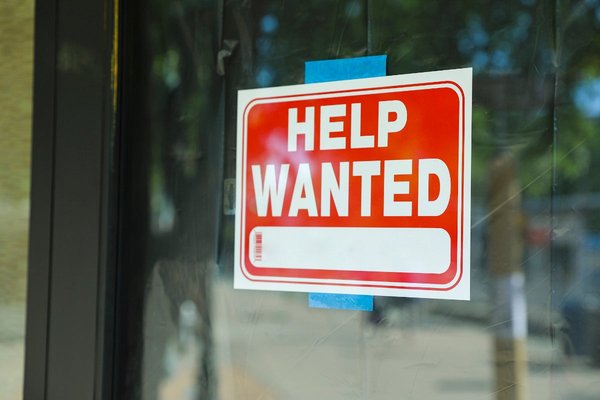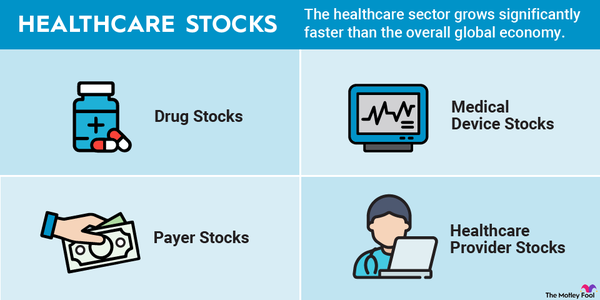More than 66 million retirees saw their Social Security benefits increase 3.2% in 2024 due to the annual cost-of-living adjustment (COLA), which is determined by the rate of inflation. But most aren’t satisfied with the bump, and many are considering going back to work to generate extra income.
That’s according to The Motley Fool’s 2024 Social Security Cost-of-Living Survey, which found widespread discontent among the 2,000 Social Security beneficiaries surveyed.
Read on to understand how retirees view the latest Social Security COLA and what steps they’re taking to cope with the financial challenges they face.
44% have considered going back to work due to low Social Security benefits
Forty-four percent of respondents are considering looking for work because Social Security does not provide enough income to support their lifestyle. That points to dissatisfaction among Social Security beneficiaries with the 2024 COLA.
The average monthly Social Security payment in 2024 after the 3.2% COLA is $1,907, according to the U.S. Social Security Administration. That does not cover even half of what Americans age 65 and older spent per month in 2022: $4,818. Considering only 54% of American households had a retirement account in 2022, it’s not surprising that a significant percentage of retirees surveyed feel as though they need another source of income.
Social Security is only supposed to cover 40% of the average worker’s salary. In reality, however, retirees depend more heavily on Social Security than that.
Here’s how much respondents to The Motley Fool’s 2024 Social Security Cost-of-Living Survey rely on Social Security for their monthly retirement income:
- 27% rely exclusively on Social Security Benefits.
- 35% rely heavily on Social Security benefits.
- 24% rely moderately on Social Security benefits.
- 12% rely slightly on Social Security benefits.
- 3% don’t rely on Social Security benefits at all.
Retirees may want to return to work for a variety of reasons: for a sense of purpose, to provide daily structure, to support a charity or other cause, and more. But the survey results suggest that financial stability and maintaining their current lifestyle are driving factors for retirees thinking about finding a new job.
Respondents who reported struggling the most financially are more likely to consider going back to work. Among those who said they struggle financially daily, 61% said they are considering looking for a job despite receiving Social Security. Meanwhile, just 14% of respondents who say they are financially stable are thinking about finding employment.
| Financial situation | Percent considering seeking employment because Social Security does not provide enough income to support their lifestyle |
|---|---|
| I am financially stable without any significant concerns. | 14% |
| I am doing well, although I occasionally encounter financial issues. | 37% |
| I face some financial challenges but generally manage. | 56% |
| I struggle financially on a daily basis. | 61% |
Those who view the COLA as insufficient to support their lifestyle are also more likely to consider going back to work.
| How do you feel about the 3.2% Social Security Cost-of-Living Adjustment for 2024? | Percent considering seeking employment because Social Security does not provide enough income to support their lifestyle |
|---|---|
| Completely appropriate | 25% |
| Somewhat appropriate | 33% |
| Neutral | 33% |
| Somewhat insufficient | 47% |
| Completely insufficient | 53% |
Among respondents who consider the COLA to be completely insufficient, 53% are considering getting a job. Among those who think the COLA is completely appropriate, 25% -- still a sizable percentage -- are thinking about finding work to support their lifestyle.
62% view Social Security cost-of-living adjustment as insufficient
A majority of respondents believe the 2024 Social Security COLA is insufficient. Overall, 36% of respondents said the COLA is completely insufficient, and 27% said it was somewhat insufficient.
| How do you feel about the 3.2% Social Security COLA? | Percent of respondents | |
|---|---|---|
| Completely appropriate | 6% | |
| Somewhat appropriate | 16% | |
| Neutral | 14% | |
| Somewhat insufficient | 27% | |
| Completely insufficient | 36% |
Just 22% of respondents said the COLA was appropriate: 6% said it was totally appropriate, and 16% said it was somewhat appropriate. The remaining 14% of respondents were neutral.
Respondents who first claimed Social Security after age 70 are more likely to view the most recent COLA as sufficient. For each year an individual delays receiving Social Security, they increase their monthly benefit up to age 70. Those who first claimed Social Security at 70 receive a larger payment, which may be why they’re more willing to view the COLA as sufficient.
| Age | Appropriate | Insufficient | Neutral |
|---|---|---|---|
| Younger than 70 | 22% | 64% | 14% |
| 70 and older | 37% | 43% | 21% |
Thirty-seven percent of respondents 70 and older said the COLA was either completely or somewhat appropriate, and 43% said it was insufficient. That’s compared to just 22% of respondents younger than 70 who said the COLA was appropriate and 64% who said it was insufficient.
The more respondents rely on Social Security, the less likely they are to view the COLA as sufficient. Roughly 70% of those who exclusively or heavily rely on Social Security see the COLA as insufficient. Those who don’t rely on Social Security at all are evenly split, with a third viewing the COLA as appropriate, a third seeing it as insufficient, and a third remaining neutral.
66% say the Social Security COLA adjustment helped “very little” with key expenses
The Social Security COLA is tied to the rate of inflation, but most respondents say it hasn’t helped their ability to pay for essential living expenses. Two-thirds say it has helped very little, and another 22% say it has not helped at all.
| How has the 3.2% COLA affected your ability to cover essential living expenses? | Percent of respondents | |
|---|---|---|
| It has not helped at all. | 22% | |
| It has helped very little. | 66% | |
| It has made a noticeable difference. | 10% | |
| It has significantly improved my situation. | 2% |
This may be a reflection of food, energy, and housing costs rising faster at times than the overall rate of inflation. Americans age 65 and older were already spending around $2,300 per month on those categories in 2022, which was hundreds of dollars more than what they received through Social Security on average each month that year.
71% have cut back on non-essential items due to inflation
In response to inflation, 71% of retirees surveyed said they have cut back on non-essential items. Forty-one percent said they have delayed making major purchases, and 39% have reduced spending on necessities. Only 14% reported making no significant changes to their spending or saving habits.
| How have you adjusted your spending or saving habits in response to inflation over the past year? (Select all that apply.) | Percent of respondents |
|---|---|
| Cut back on non-essential items | 71% |
| Delayed major purchases | 41% |
| Reduced spending on necessities | 39% |
| Sought additional income sources | 22% |
| Made no significant changes | 14% |
| Increased savings for emergencies | 14% |
If respondents felt as though the Social Security COLA was sufficient and keeping pace with inflation, it’s likely that fewer would have reported a decline in both discretionary and required spending in the past year.
Despite cutting back on spending, 44% of respondents are having trouble building or maintaining emergency savings, 39% are having trouble affording groceries, and just over 30% are facing difficulties with paying off debt and paying for their utilities.
| In which of the following categories are you struggling financially? | Percent of respondents | |
|---|---|---|
| Building or maintaining emergency savings | 44% | |
| Food | 39% | |
| Debt repayment | 32% | |
| Utilities | 31% | |
| Healthcare | 25% | |
| Housing | 23% | |
| Transportation | 19% | |
| Other | 14% |
Those are all fundamental components of financial stability. Emergency savings are crucial for those in retirement because they’re likely to be on a limited, fixed income and have little financial flexibility. Being able to pay for groceries and utilities is a necessity. Falling behind on debt can snowball and create a long-term financial strain.
82% say the COLA calculation method doesn’t reflect retirees’ financial situation
Eighty-two percent of respondents believe the formula to determine the Social Security COLA does not accurately reflect how retirees experience inflation.
The COLA is equal to the percentage increase in the Consumer Price Index for Urban Wage Earners and Clerical Workers (CPI-W) from the average for the third quarter of the current year to the average for the third quarter of the previous year in which a COLA came into effect.
Retirees have different spending patterns than younger generations and much less opportunity to earn more income. A higher percentage of their spending goes to food and healthcare, and food has experienced higher price increases than overall inflation in recent years.
Those who are more financially stable are more likely to think the Social Security COLA formula reflects how retirees experience inflation, but it’s not a majority.
| To what extent do you believe the current method of calculating the Social Security COLA accurately reflects the inflation experienced by retirees? | Accurately | Not Accurately |
|---|---|---|
| I am financially stable without any significant concerns. | 33% | 67% |
| I am doing well, although I occasionally encounter financial issues. | 21% | 79% |
| I face some financial challenges but generally manage. | 12% | 88% |
| I struggle financially on a daily basis. | 9% | 91% |
| All respondents | 18% | 82% |
78% of retirees think the Social Security COLA should be 6% or higher
Forty-two percent of respondents believe that in order to keep up with the cost of living, the Social Security COLA should be between 6% and 9%, and another 36% believe it should be more than 9%. In sum, 78% of respondents think the COLA should be at least 6%.
| In your view, what would be the ideal percentage increase for the Social Security COLA to keep up with your current cost of living? | Percent of respondents | |
|---|---|---|
| Less than 3% | 1% | |
| Between 3% and 6% | 21% | |
| Between 6% and 9% | 42% | |
| More than 9% | 36% |
The Social Security COLA has only exceeded 6% once since 1984. That was in 2023, when beneficiaries received an 8.7% bump.
Financial stability has a significant impact on what the ideal COLA should be. Sixty-one percent of those who struggle financially on a daily basis think the COLA should be more than 9% compared to just 19% of those who have no financial concerns.
Historic Social Security Cost-of-Living Adjustments
Nearly half of respondents are confident Social Security will last throughout their retirement
Forty-eight percent of respondents are confident that Social Security will provide benefits throughout their retirement. Twenty-two percent are not confident, and 30% are neutral.
| How confident are you that Social Security will continue to provide benefits throughout your retirement? | Percent of respondents | |
|---|---|---|
| Not confident | 5% | |
| Somewhat unconfident | 17% | |
| Neutral | 30% | |
| Somewhat confident | 28% | |
| Extremely confident | 19% |
That muted optimism is a result of several factors. There are concerns about the sustainability of Social Security as life expectancy increases and more baby boomers enter retirement. Questions remain about long-term funding of the Social Security Trust Fund. Changes in government policy could endanger the program as well.
Those factors are outside of individual retirees’ control, and, as a result, may generate anxiety about the future of Social Security. Those who struggle financially are more likely to be concerned about Social Security providing benefits throughout their retirement.
Thirty-nine percent of those who struggle daily are not confident about Social Security lasting for their entire retirement, and just 31% of that group are confident that Social Security will exist for their full retirement. Among respondents who have no financial concerns, 68% believe Social Security will last throughout their retirement, and just 11% are not confident.
Inflation raises the need for strategic retirement planning
Retirees are feeling the bite of inflation. Sixty-two percent of respondents to The Motley Fool’s Social Security Cost-of-Living Adjustment Survey find the COLA insufficient, and 44% are considering going back to work.
While retirees grapple with current conditions, younger Americans may be asking how much they need for retirement. That question gets to the heart of retirement planning. The data suggests that absent a plan, retirees may have to compromise on their lifestyle or return to work.
Methodology
The Motley Fool surveyed 2,000 retired Americans who began to receive Social Security benefits in 2023 or later. Results were post-stratified to generate nationally representative data based on age and gender. Pollfish employs organic random device engagement sampling, a method that recruits respondents through a randomized invitation process across various digital platforms. This technique helps to minimize selection bias and ensure a diverse participant pool.





























































